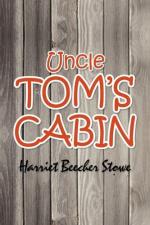|
This section contains 3,246 words (approx. 11 pages at 300 words per page) |

|
Slavery Victims' Pain Represented in "Uncle Tom's Cabin" and "The Marrow of Tradition"
Summary: Much of 19th Century American Literature focuses on the the growing pains of the American society. When it comes to African-Americans' experiences, this is embodied in Harriet Beecher Stowe's "Uncle Tom's Cabin" and Charles Chesnutt's "The Marrow of Tradition." Both novels paint a poignant picture of America during legalized slavery and its aftermath.
Pain is inevitable within a society struggling for and against power. This is a central theme running throughout nineteenth-century American literature, especially in work written during the latter part of the century. The causes and consequences, as well as the very nature of the American body and soul in trauma paints a poignant picture of the problems and social changes America faced both during slavery as well as after its abolition.
This is evident in Harriet Beecher Stowe's Uncle Tom's Cabin and Charles Chesnutt's The Marrow of Tradition where the wounding of both the physical body and emotional soul features strongly throughout both texts. Published in 1853 after the passing of the Fugitive Slave Law, Uncle Tom's Cabin tells of the circumstances of various slaves as they encounter different owners. Tom, the novel's protagonist, is a devout Christian slave who is ultimately beaten to death by his owner, thus...
|
This section contains 3,246 words (approx. 11 pages at 300 words per page) |

|


